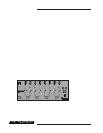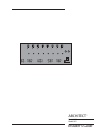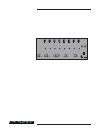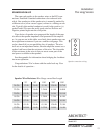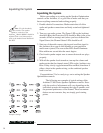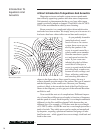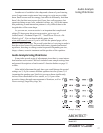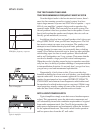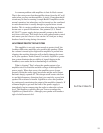
THE TRUTH ABOUT BASS AND
THE PROGRAMMABLE FREQUENCY MATCH FILTER
Now that digital audio is the favorite musical source, there’s
more low bass running around in a typical system. Low bass
injects large amounts of power into ANY kind of speaker — up to
60% of your amplifier’s output is being used to reproduce fre-
quencies under 100Hz. That can really tax an audio system. The
second problem is that bass produces heat in the speaker. If more
heat is built-up than the speaker can dissipate, the voice coil can
literally go into meltdown (or worse).
In addition, ultra-low bass and small speakers don’t always get
along, ESPECIALLY when you DO have ample power. The low
bass music content can cause over-excursion: The speaker cone
attempts to travel farther than its physical limits, potentially
causing damage (in some cases you can actually hear a clacking
sound!). Even before destruction sets in, there are other problems
with feeding super-low bass to small speakers. Most bookshelf
and in-wall loudspeakers are 2-way systems. That means that the
woofer also handles a large part of the critical midrange area.
When the woofer is bashing around trying to reproduce unrealisti-
cally low bass, its ability to produce midrange is compromised due
to intermodulation distortion. So not only don’t you get low bass,
you get lousy vocal and instrumental reproduction.
Pragmatically, it boils down to this: If you want ultra-low,
foundation-shaking bass from an in-wall speaker, you should add a
separate subwoofer. A more economic approach is to equalize the
speaker for maximum low bass output WITHIN IT’S PRACTI-
CAL RANGE and eliminate lower frequencies which either can’t
be reproduced or which incite excessive cone travel. While it may
seem surprising, actually cutting off some of the lowest bass, will
make the bass sound cleaner, punchier and even louder.
INTELLIGENT POWER SUPPLY
Typical amplifiers simply waste their excess headroom power
as heat. This prematurely wears the electronic components and
will substantially increase the ventilation requirements of a typical
home audio equipment stack. Our Class H design monitors the
audio power requirements and continuously adjusts the Architect
for the optimum headroom. The result is much cooler operation
and less power draw from the AC wall outlet.
What’s Inside
PFM filter frequency response
18
Typical Amplifier
Class H Amplifier



